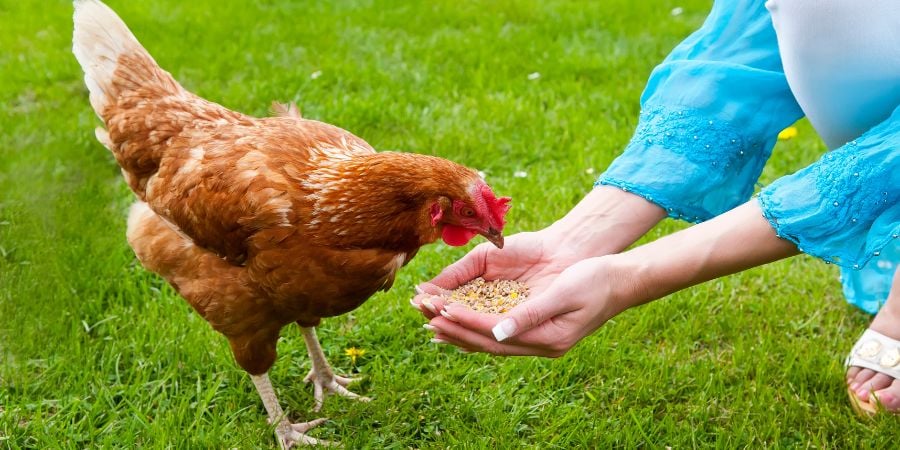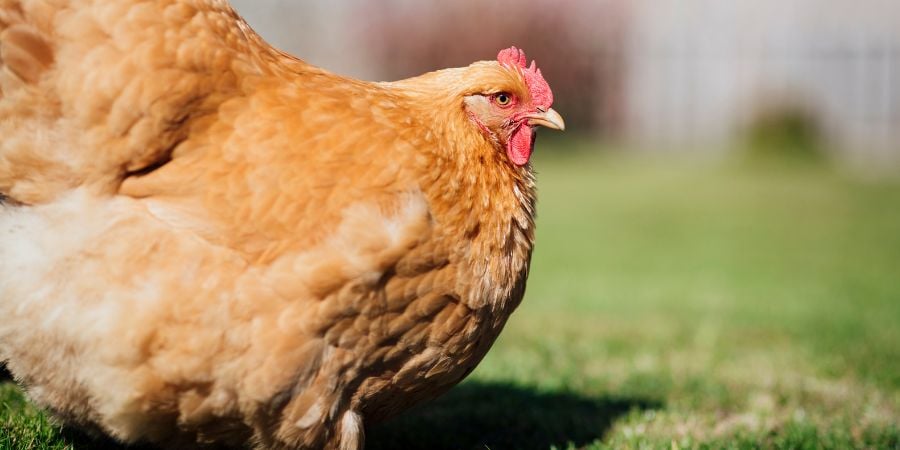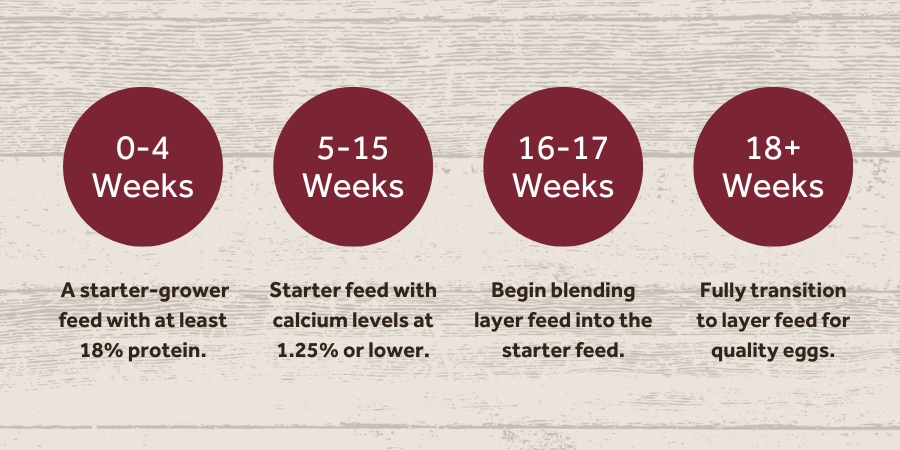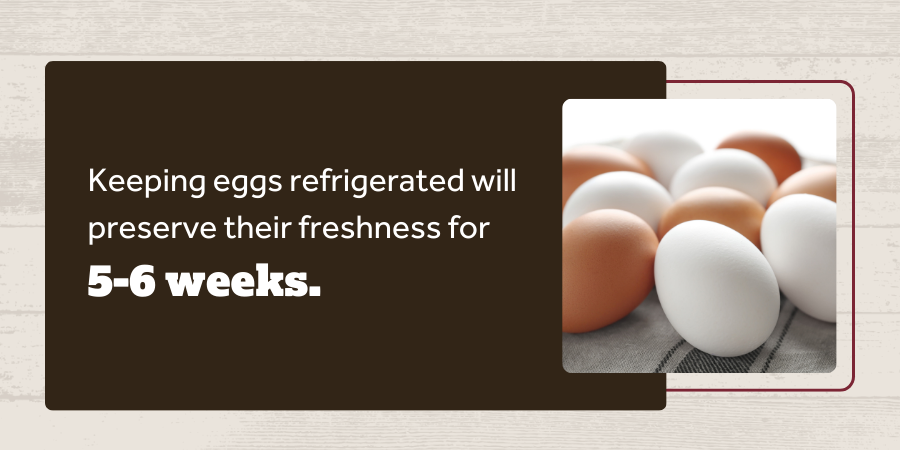Chickens to Raise for Eggs — Raising to 16 Weeks for Vibrant Health
by Dakota Storage Buildings, on April 24, 2024

Embarking on the rewarding journey of raising chickens, especially for the joy of harvesting farm-fresh eggs, marks the beginning of a fulfilling venture into self-sufficiency. The experience of nurturing these birds, from the tender age of baby chicks to the significant milestone of collecting the very first egg, is a journey filled with anticipation, learning, and joy. This blog delves deep into the critical aspects of preparing your flock for the egg-laying phase, emphasizing the importance of proper nutrition and the essential practices that promote the health and happiness of your chickens. It is about creating an environment where your chickens can flourish, laying nutritious, delicious eggs, while also offering you the satisfaction of knowing you are providing the best care possible. We will explore how to cater to your flock's needs through each stage of their growth, ensuring they have everything they need to thrive and produce abundantly.
Choosing the Best Egg Layers

Selecting the right chickens to raise for eggs is a critical decision. The diversity among chicken breeds in terms of egg-laying ability, egg color, temperament, and adaptability to environmental conditions offers a wide range of options for chicken keepers. For those primarily interested in maximizing their egg production, breeds such as Golden Comets, Cinnamon Queens, and Rhode Island Reds stand out for their impressive laying rates. These breeds often provide upwards of 280 to 320 eggs per year. These chickens are known not only for their productivity but also for their hardiness and ease of care, making them ideal choices for those looking to ensure a steady supply of eggs.
Dual-purpose breeds, like Buff Orpingtons, Speckled Sussex, and Plymouth Rocks, present an opportunity for homesteaders looking for versatility. These chickens offer the best of both worlds: a respectable egg yield with the added benefit of meat production. Dual-purpose breeds are known for their friendly dispositions, making them excellent backyard companions and productive members of the flock. Depending on the breed, they can lay 180 to 240 eggs per year while also providing additional value through their meat.
If you prefer colorful eggs, breeds like Cream Legbars and Easter Eggers contribute blue and green eggs, adding a delightful variety to your daily collection. Each breed comes with its unique set of requirements and benefits, influencing not only your egg basket's visual appeal but also your flock's overall dynamics. Understanding the laying capacities, needs, and overall characteristics of different chicken breeds is essential in tailoring your flock to meet your specific goals. By carefully considering these factors, you can create a harmonious and productive backyard flock that not only meets your egg-laying expectations but also enriches your life with their presence.
Essential Nutrition for Egg-laying Excellence

Raising chickens for eggs requires a keen understanding of the nutritional and environmental needs of your flock at every stage of their development. From the moment your chicks hatch to the day when they lay their first eggs, each phase of their growth demands specific care and attention. By ensuring your chickens receive the right feed at each stage, you are setting the foundation for a healthy, productive flock capable of providing a steady supply of farm-fresh eggs.
The First Four Weeks: Focus on Protein
In the initial four weeks, laying the foundation for a healthy, productive hen is crucial. During this period, a starter-grower feed enriched with at least 18% protein is indispensable for supporting the rapid growth and development essential for a robust future layer. This diet, meticulously formulated with essential amino acids, prebiotics, probiotics, and a comprehensive blend of vitamins and minerals, is tailored to meet the expansive nutritional needs of growing chicks. It ensures they start their journey with the strength and vitality needed for healthy development and a successful transition to egg-laying maturity.
Weeks Five to Fifteen: Calcium Levels Are Crucial
As the chicks progress from their formative weeks into a more advanced stage of growth, continuing the starter feed is vital to ensure a smooth transition toward full maturity. The emphasis remains on maintaining a balanced diet, particularly keeping calcium levels at around 1.25% or lower. This careful management of calcium intake is critical to prevent the onset of premature laying, which could otherwise pose health risks to their still-developing bodies. This phase is about nurturing the continued growth of your chickens, ensuring they build the physical strength necessary for the demands of egg laying.
Weels 16-17: Adjust Nutrition to Prepare for Egg-laying
The period around weeks 16 to 17 is filled with anticipation and excitement as the first signs of egg-laying draw near. This pivotal time calls for a gradual shift to a layer feed, by blending the starter and layer feeds together. This is specifically designed to meet the nutritional demands of egg production. A layer feed, with its adjusted protein content and increased calcium levels, is crucial for supporting the hens as they begin their egg-laying journey. This diet ensures the production of eggs with strong, healthy shells, providing your flock with the specific nutrients needed during this critical phase of their development.
Week 18: Transition to Layer Feed
The transition to egg-laying nutrition happens around week 18 when the chicks should be fully eating layer feeds. This approach ensures a seamless dietary change, accommodating the chickens' established feeding habits, whether they prefer crumbles or pellets. The gradual introduction of layer feed, paired with the continuity of familiar textures, minimizes disruption and stress, paving the way for a successful transition to the nutrients required for efficient and healthy egg production. This careful dietary management is essential for maintaining the overall well-being of your flock as they embark on the rewarding journey of egg-laying.
Collecting and Storing Fresh Chicken Eggs
The journey of raising chickens culminates in a moment of excitement when your hens lay their first eggs. This significant milestone in chicken-raising is a testament to your diligent care and attention but also marks the beginning of a new phase in your homesteading journey. As your flock matures and starts laying eggs, understanding the nuances of this phase becomes crucial to ensure the health of your chickens and the quality of the eggs they produce. Observing your chickens closely will reveal physical signs indicating they are approaching egg-laying maturity. Changes in behavior and physical appearance, such as the reddening of combs and wattles and an increased interest in nesting areas, are clear indicators that the first egg is not far off. This transition to egg-laying requires a few adjustments in your daily routine to maintain the well-being of your flock.
Collecting eggs should become a part of your morning routine. Strategically placed nesting boxes can streamline the collection process, offering a designated spot for hens to lay their eggs and facilitating easier retrieval. Hens typically lay eggs in the early hours, and quick collection is essential to prevent any potential issues. Eggs left in the nesting box for too long can break or become targets for curious hens, leading to the unwanted habit of egg-eating. To avoid this outcome, use a sturdy basket or container during collection, ensuring that each egg is carefully gathered and inspected. Each egg deserves a thorough examination for cracks or abnormalities. A compromised shell can be an entry point for bacteria, posing a risk to both the egg's freshness and your health. Cracked eggs should be discarded immediately to avoid any health hazards.

After collection, the next step is ensuring your eggs are stored correctly to maximize their shelf life. While unwashed eggs with intact cuticles can be stored at room temperature, refrigeration is recommended to preserve their freshness for 5-6 weeks. This practice not only extends the usability of your eggs but also maintains their nutritional value and taste. Embracing this new phase of chicken-raising with knowledge and preparation will enrich your experience and yield a continuous supply of fresh, nutritious eggs. By adhering to these practices, you ensure that your efforts in caring for your flock are rewarded with the best possible outcome: an abundant supply of eggs that are as healthy and delicious as the chickens that lay them.
Embarking on the Egg-laying Adventure: A Guide to Raising Chickens
Embarking on the path to find chickens to raise for eggs encompasses a journey that is enriching and fulfilling. This venture delivers tangible rewards like fresh, farm-to-table eggs, but it also invites you into a deeper connection with the cycles of life and the joy of nurturing life from the very beginning. It is about the early mornings filled with the anticipation of new eggs, the satisfaction of watching your flock thrive under your care, and the lessons learned through each season.
With our comprehensive guide, we delve into every aspect of raising chickens for eggs, from selecting the right breeds to understanding their nutritional needs at every stage of growth. We cover the essentials of coop design to ensure comfort, safety, and productivity alongside strategies for managing the health and well-being of your flock. By following the insights and best practices detailed in our guide, you and your flock can enjoy vibrant health and baskets brimming with nutritious, delicious eggs. Download “The Beginner’s Guide to Raising Backyard Chickens” today!

























